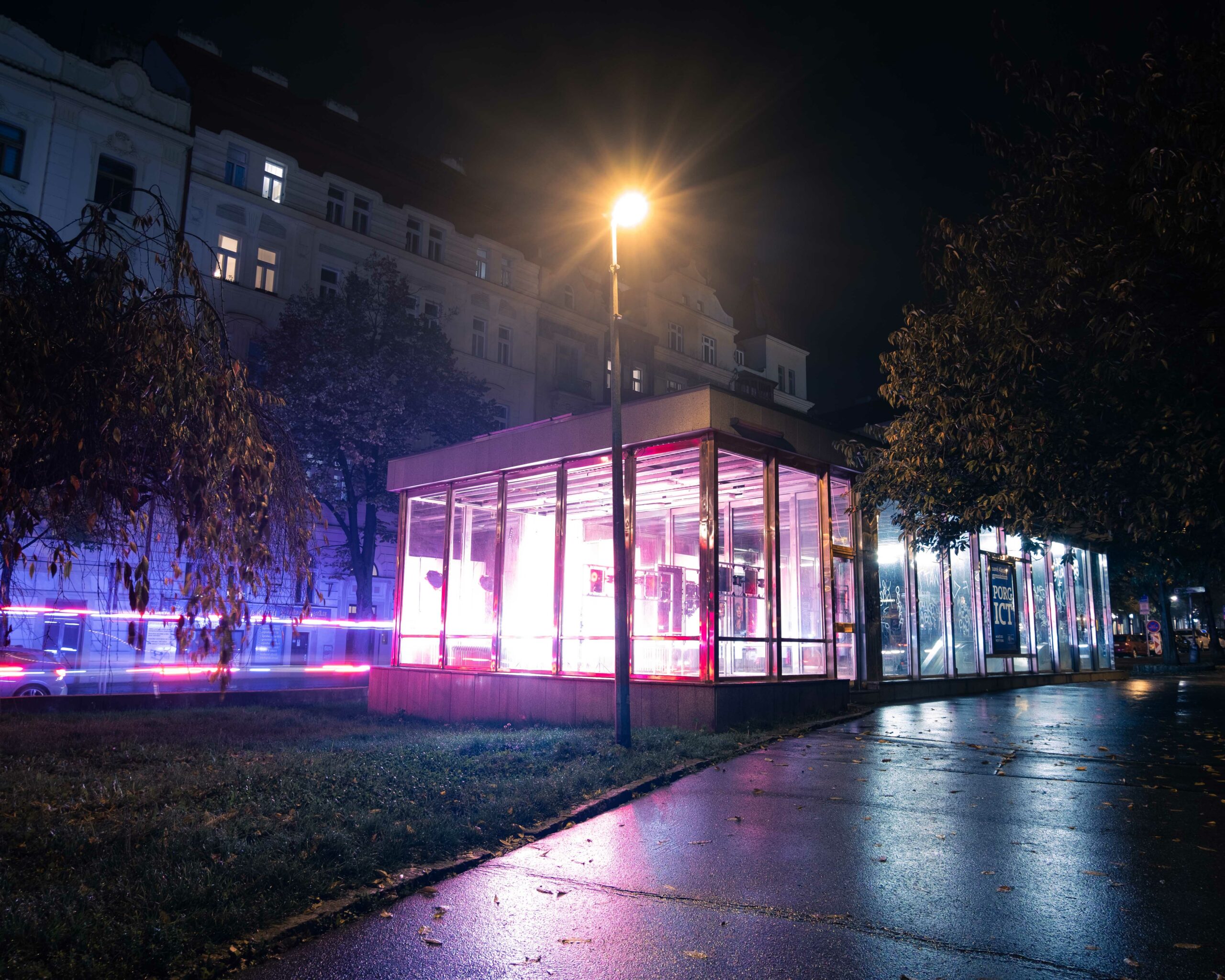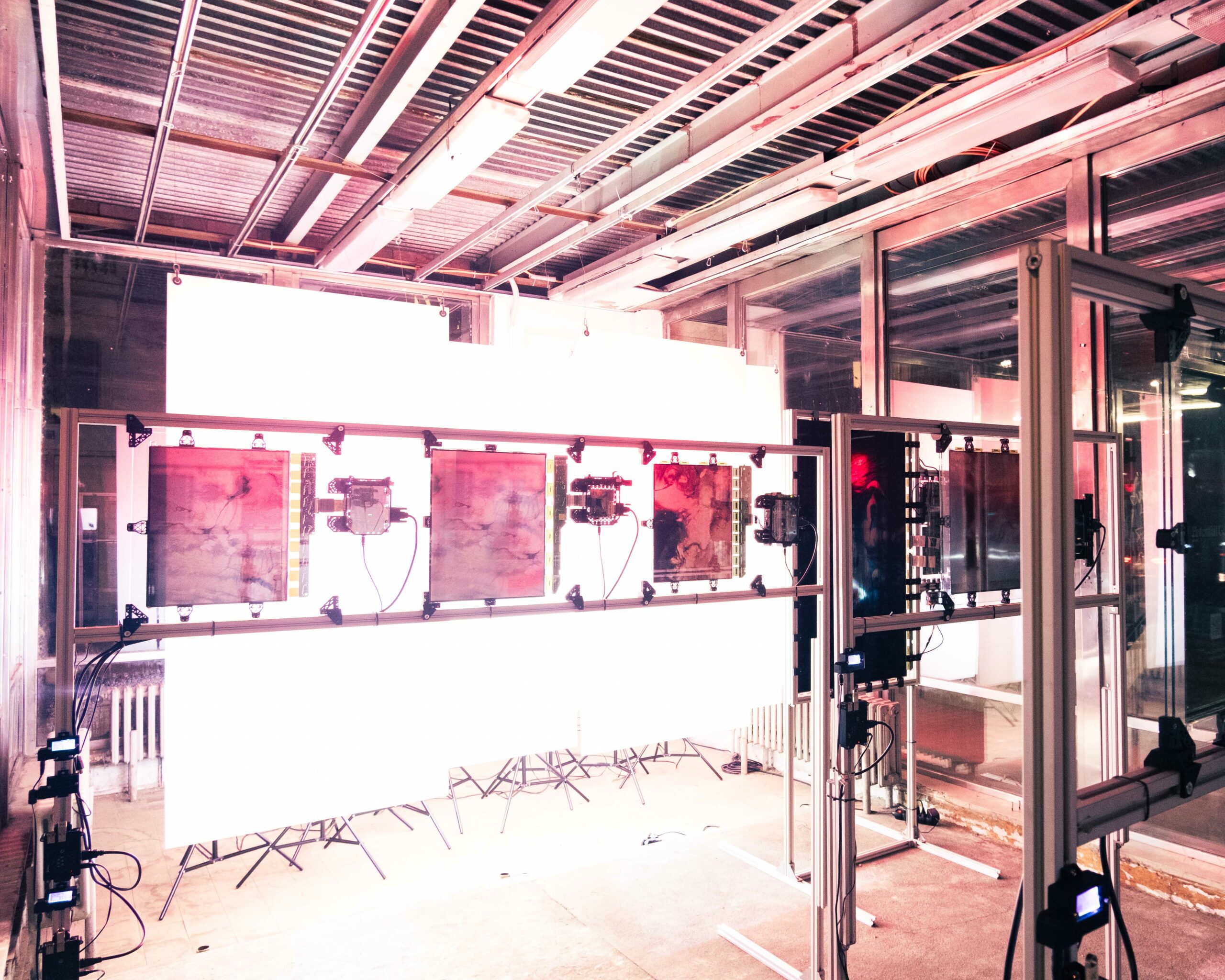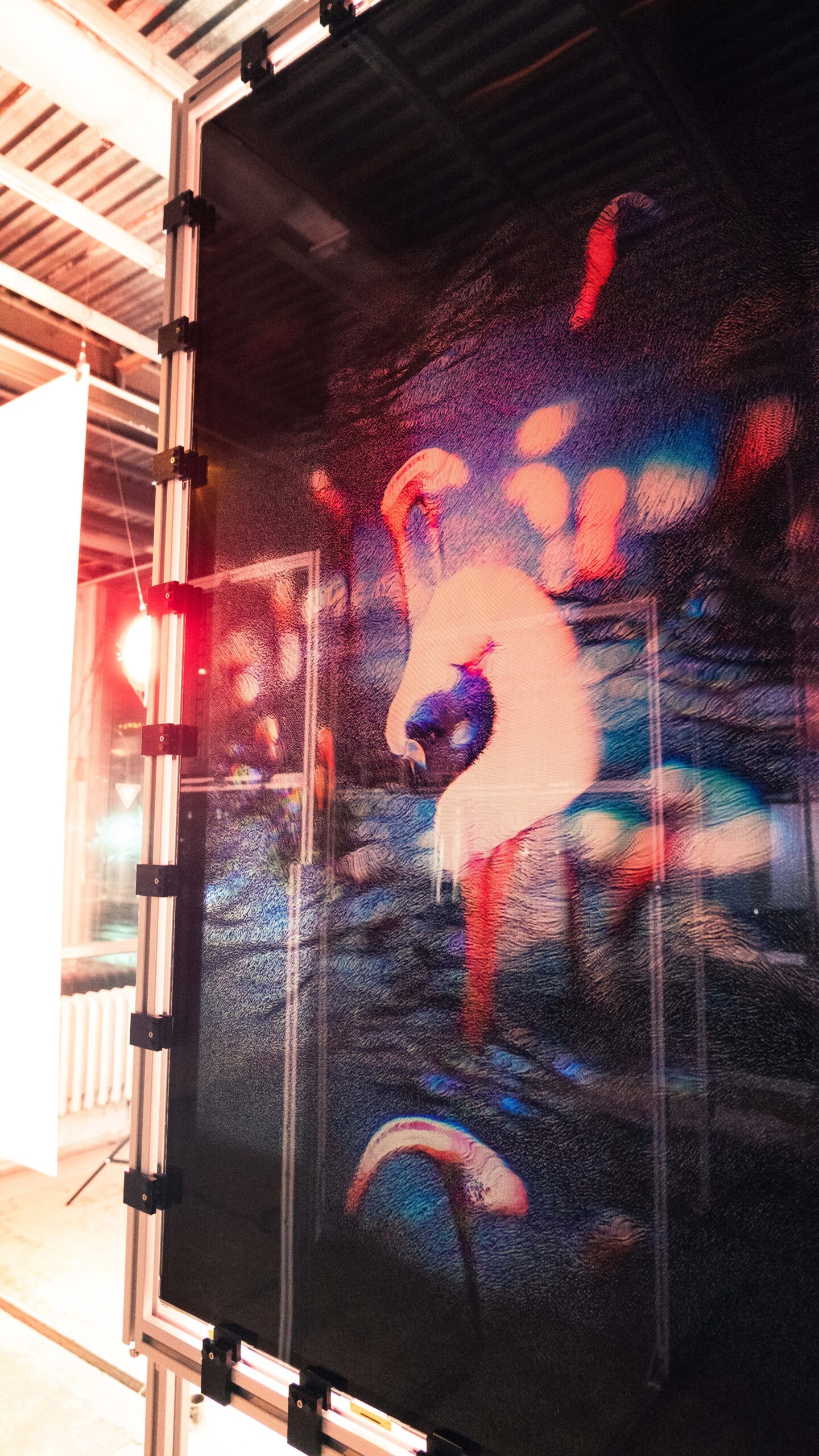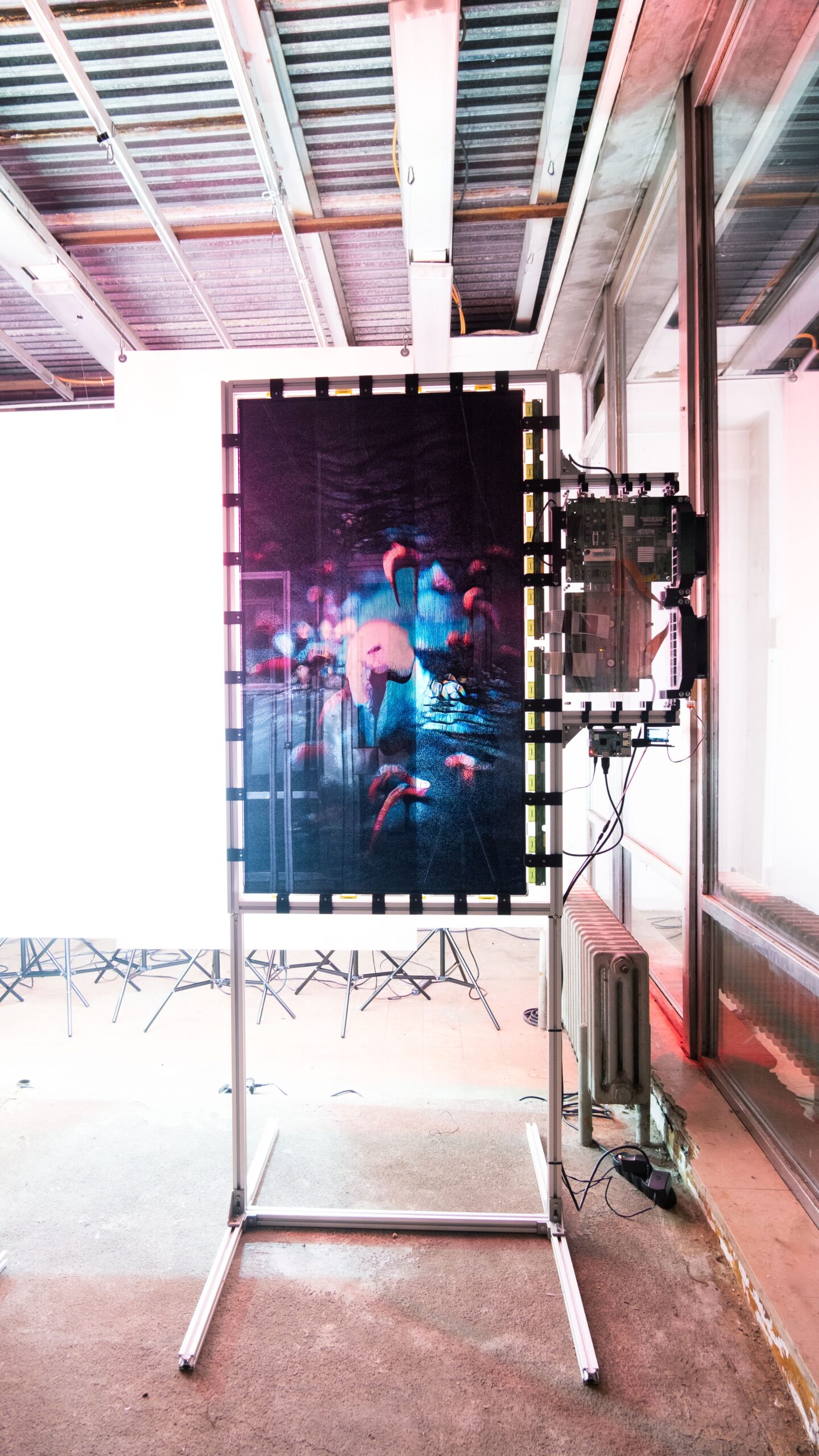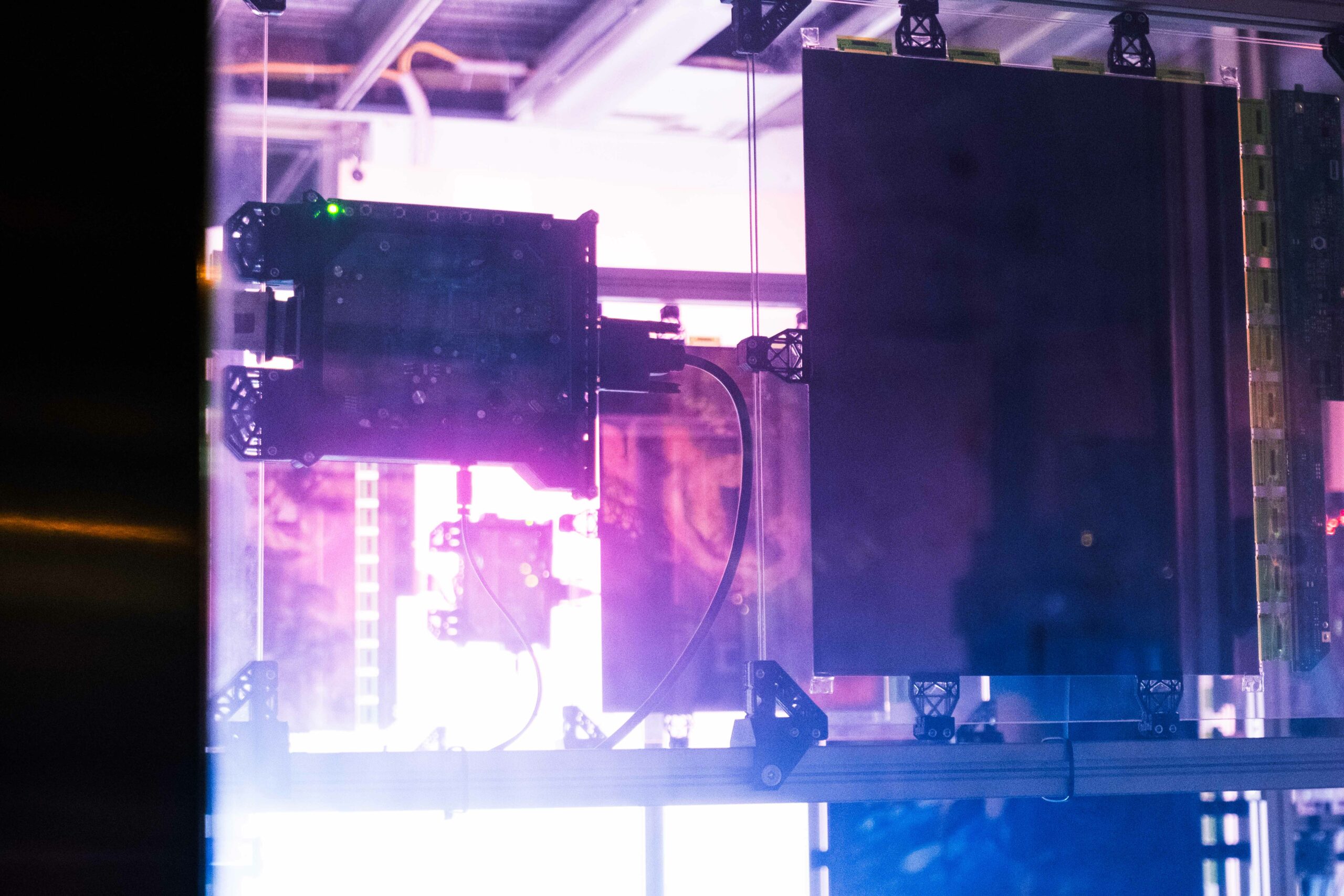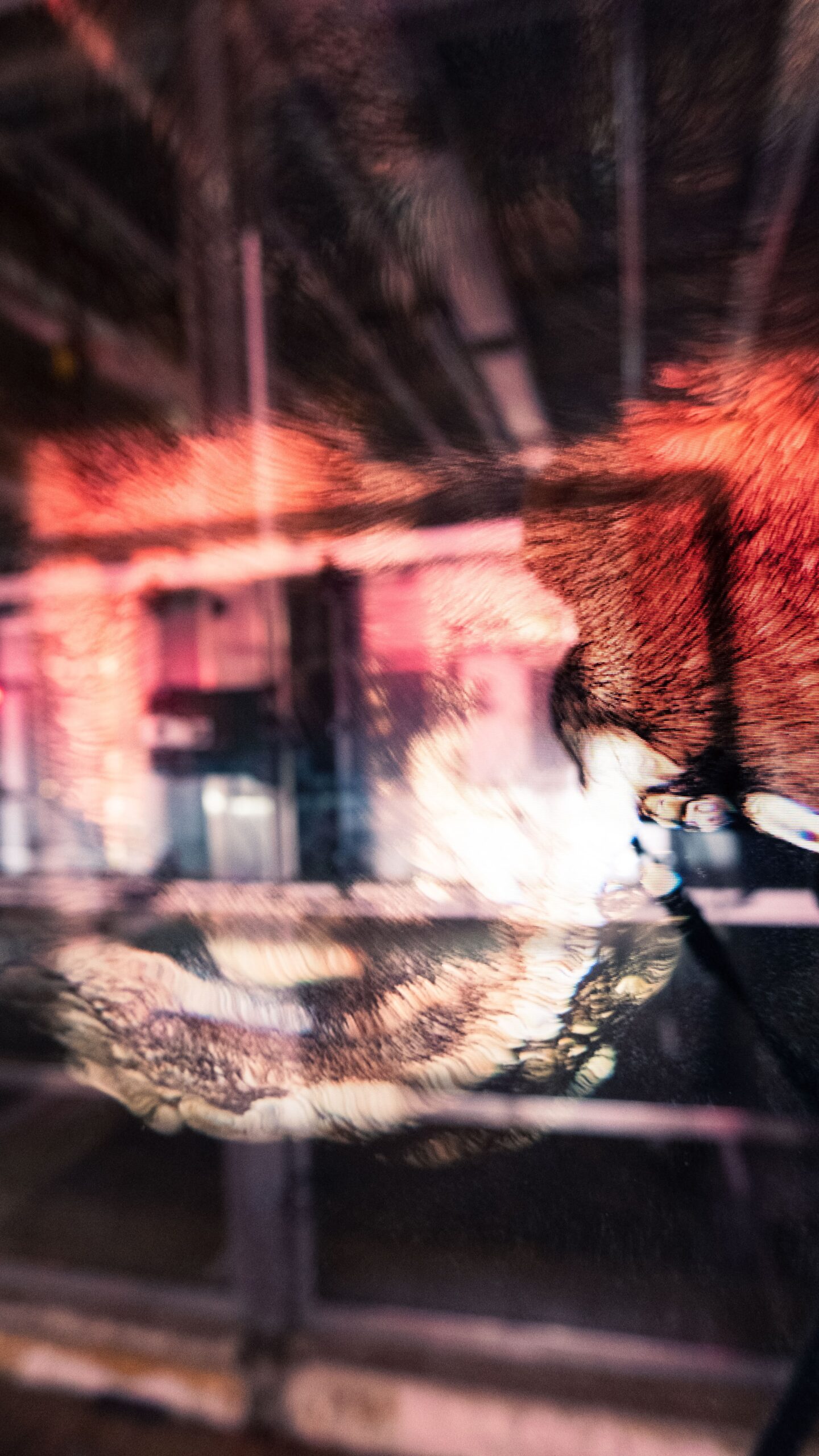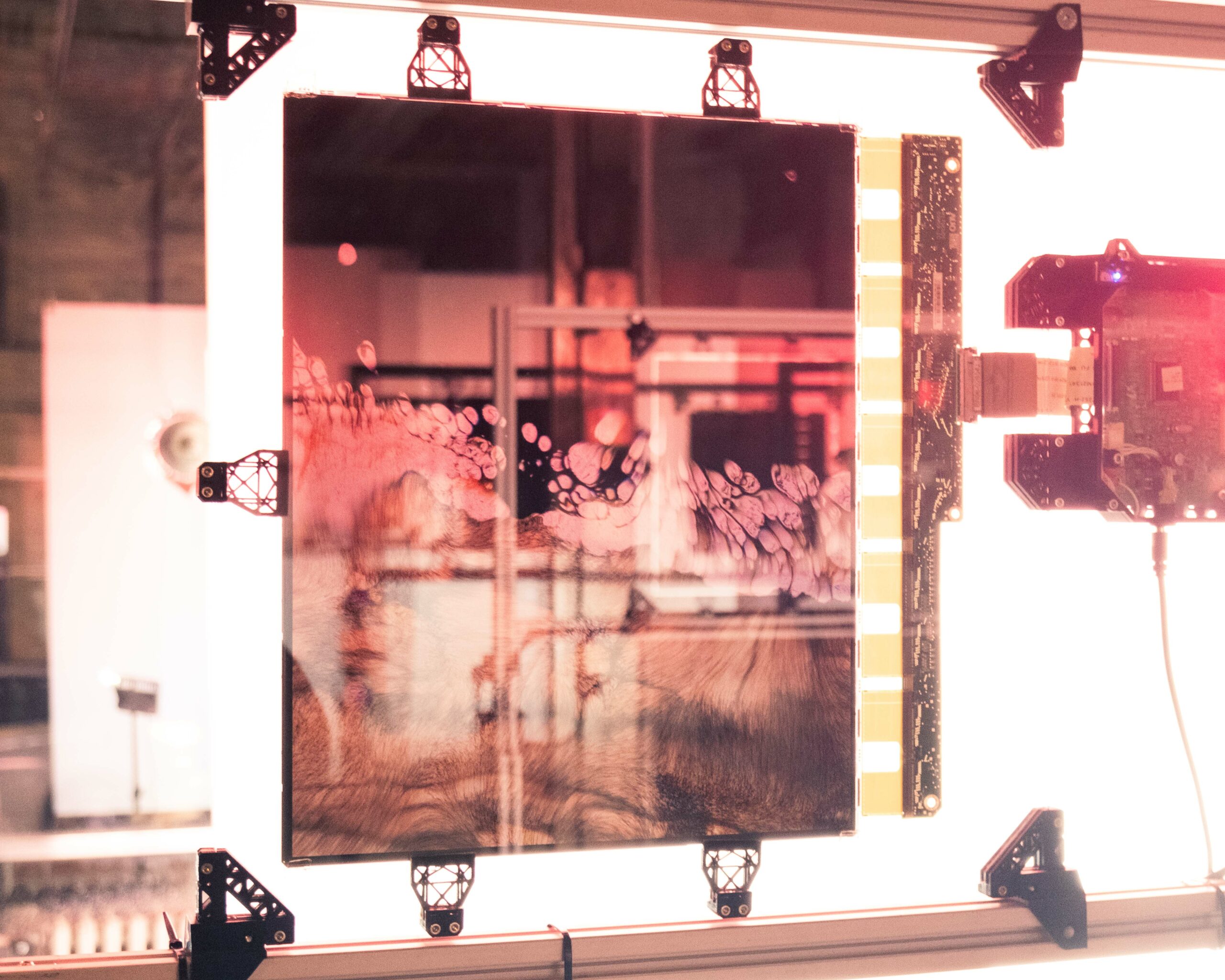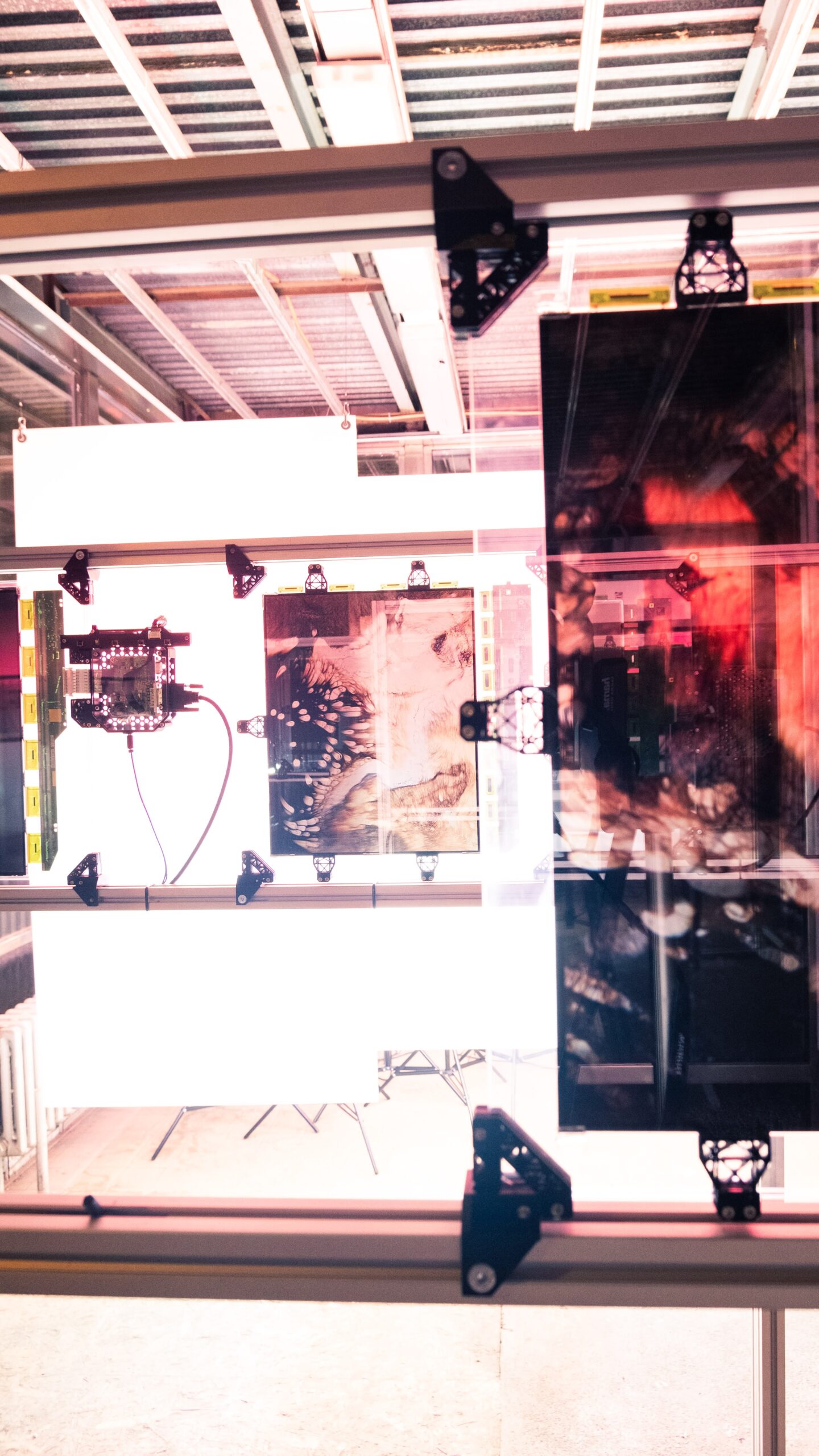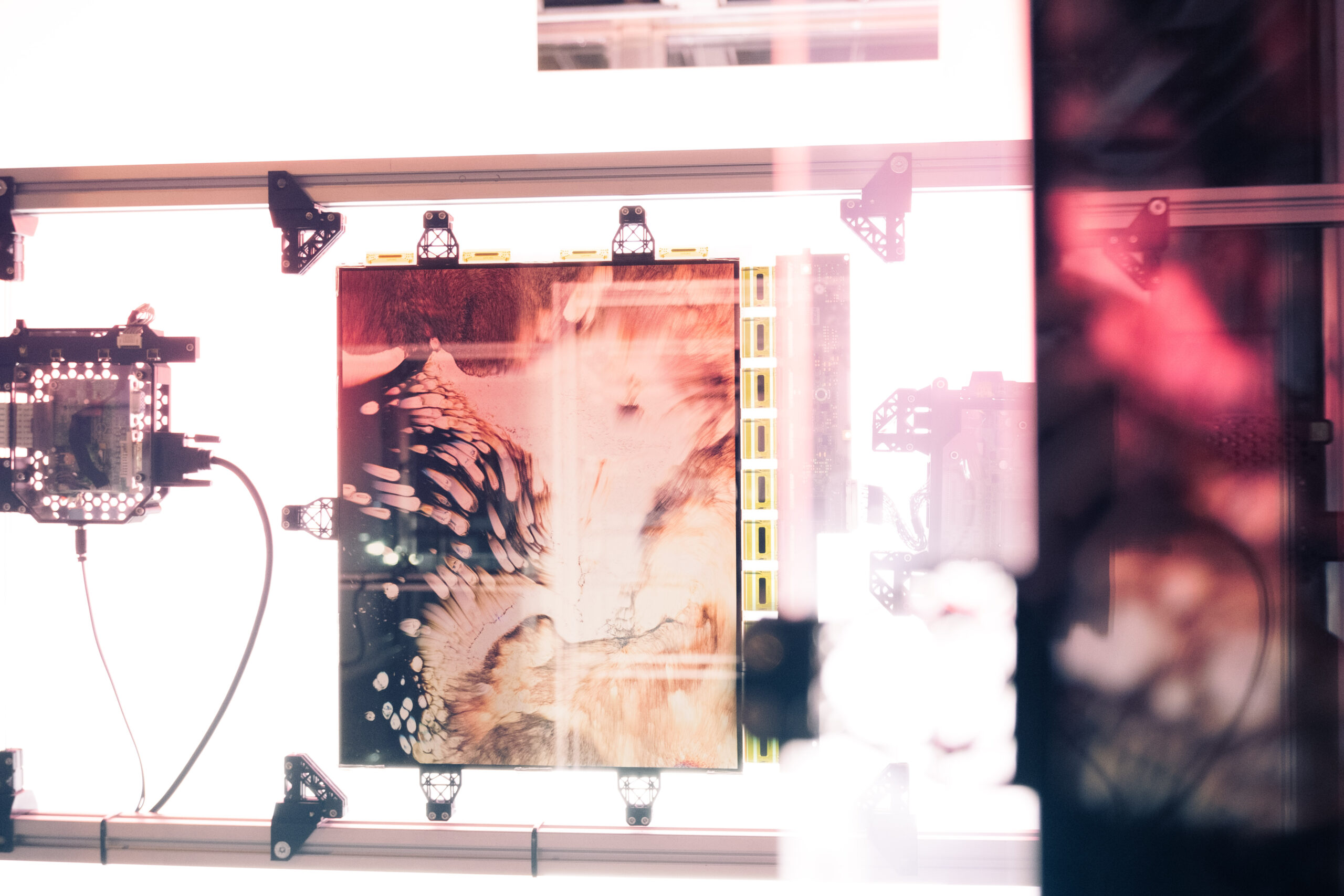
Magna Mutatio / Pantha Rei
Magna Mutacio is the title of a series of works that explore the transformation of a selected territory over time, specifically the transformation of cities, landscapes, bodies of water and glacial formations. European Space Agency satellite data are used for this analysis. The transformation of the territory is mapped, which, given its size and the long period of observation, could not be perceived from the viewer's perspective. The work thus offers a macro view of the subject.
The Magna Mutatio / Pantha Rei installation explores the unique ecosystem of Lake Natron in northern Tanzania. Monitoring through ESA datasets provides a macro-scale view of the site over different time periods. The work builds on previous work by Magna Mutatio / Natron, which tracked colour phenomena occurring on the lake due to the specific composition of the water there. This time, it is not a comprehensive view of the entire body of water, but more detailed shots of different parts of the lake, conveying the unique processes to the viewer in more detail.
The installation uses translucent panel technology - a layer of liquid crystals extracted from display devices through reverse engineering techniques. Here, the white colour appears as transparent, which allows you to look through one panel to another, blending the images, spreading the visual principle, a different view of the observed reality.
Opposite the viewer, at the far end of the installation, stands a source of red light - a colour characteristic of Lake Natron - which permeates the display opposite the recipient as a unifying principle.
The set of six smaller panels is rounded off by the seventh, the largest, presenting a generative video that takes specific Natron phenomena to more abstract levels. A local species of flamingo also acquires its red coloration by consuming red cyanobacteria found only in the extreme conditions of the lake. Using machine learning, the work works with this concept, thinking independently about the form of the flamingo and trying to give it a shape, starting from already created forms and transforming and improving them again and again.





















































